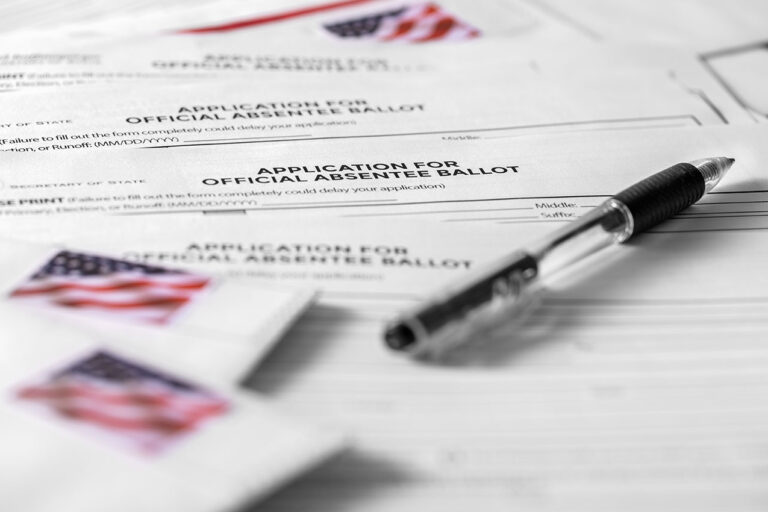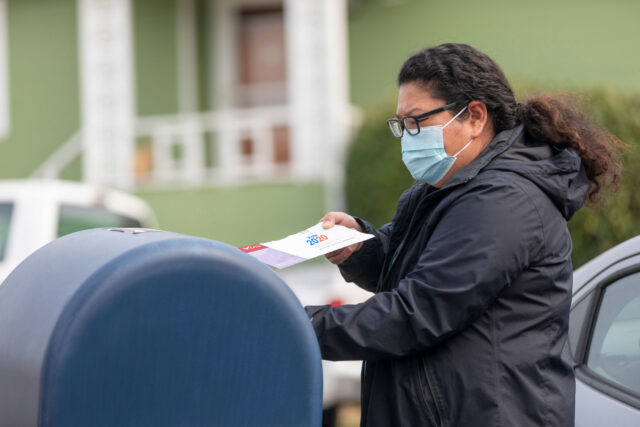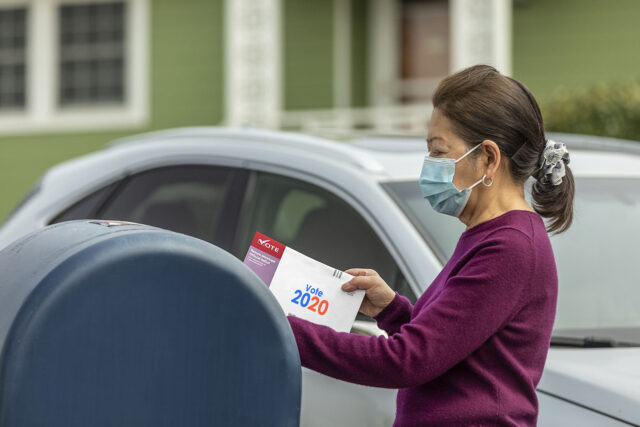Summary
The novel coronavirus pandemic threatens the traditional model of voting, a model in which most voters expect to show up at a polling place on Election Day to cast a ballot. While in-person voters may be pressed into close quarters with others, the risk is even higher for poll workers, who encounter hundreds of voters in the course of a typical Election Day. This year, jurisdictions may contemplate radically limiting the number of in-person locations.
A push to increase voting by mail is the most common solution to this problem of safety and access. California, for instance, will be sending voter ballots in the mail and relaxing requirements for in-person voting locations. Which groups of voters might struggle with a transition to higher rates of voting by mail? If other low-risk options are offered, such as drop boxes or early voting, which voters might take advantage? If the postal service has trouble managing a higher volume of mailed ballots, as many fear it will, how many mailed ballots will be vulnerable to these problems because they are sent close to Election Day? Does the switch to higher voting by mail benefit one political party over another?
In this report, we use California’s experience with a pre-coronavirus voting reform in some of its counties to offer answers to these questions. The reform-the Voter’s Choice Act (VCA)-has been adopted by 15 of 58 counties and significantly increases by-mail voting, reduces and consolidates in-person options, and mandates certain early voting alternatives. We identify registered voters whose voting behavior changed between the 2018 California Primary and the 2020 Primary-after the reform was adopted, and we examine the timing and manner of voting in two VCA counties. We find:
- Turnout is generally higher under the VCA, especially for registrants who have indicated they prefer voting in person.
- Though turnout is higher across most demographic groups there are a few exceptions, which should be points of concern for the fall. Turnout under the VCA:
- Declined or barely increased for foreign-language registrants who prefer in-person voting and for renters who prefer by-mail voting.
- Declined in the 2020 primary for new and young registrants.
- Declined in the 2018 primary for Latino and Asian American registrants who prefer to vote by mail.
- Voters who mail in ballots appear to do so at a steady rate in the weeks before Election Day. Voters using other options tend to vote on Election Day or in the last few days before.
- Non-English and senior registrants use mail voting at higher rates. There are no significant differences by race or ethnicity.
- There is no evidence that the change to higher mail voting favors voting by registered Democrats or Republicans.
Election administrators and advocacy organizations should consider targeting extra outreach toward groups that might have lower turnout after the transition to voting by mail. Research suggests this outreach is most effective when it comes from trusted messengers. These messengers vary considerably across groups and even within generations of a group. Outreach should also be considered for groups that use mail voting at lower rates to encourage that option for public health reasons. To reduce in-person turnout, administrators might also encourage more early voting for those who do not want to mail their ballots in.



